We know consumers want to make sustainable choices – and yet the gap between their intent and action on sustainability is often big. This intention-action gap in sustainable behavior has spurred a significant amount of research in the field of behavioral insights. Many different interventions are being tested to see how we can better deliver sustainable products and services to help consumers overcome the barriers that get in the way of engagement. In order to do that, we need to understand what those barriers are.
In our Circular Retail Research, we conducted service tests, interviews with circular retailers, and gathered data from 600 consumers about different circular services currently offered in retail spaces. We focused on repair service, returning products for recycling or upcycling, and refill services. While the paper focuses on a wide range of insights, one we will discuss here is the role of visual communication and visual communication strategies brands can implement.
Poor Communication Is A Key Barrier
The study found that one of the key barriers to using these services is that consumers are often unclear about the process or the benefits. Visual communications, placed at key touchpoints in the customer journey, can not only encourage engagement in circular services but improve the customer experience overall through a sense of positive action. Here are some visual communication tactics that can support the better adoption of sustainable retail experiences.
Place Communications Front And Center In The Journey
As consumers open a web page or enter a store, sustainable retail services need to be a central part of the story they encounter. Communicating early on and in simple, clear terms, makes it less intimidating to take the first step. A few great examples to consider:
- Arcteryx features a repair service as a kind of retail theatre, putting the area and workers proudly on display.
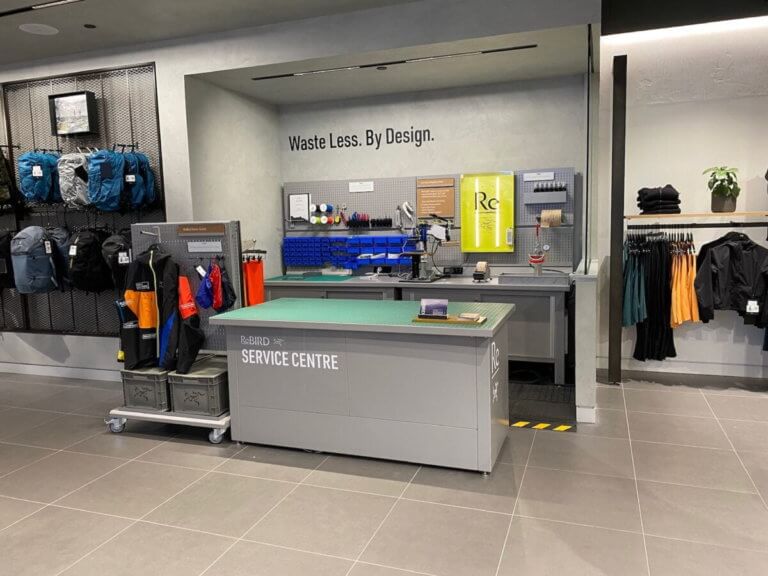
Image Source: Retail Insider
- As you enter Unboxed Market, a zero-waste local grocer in downtown Toronto where we were able to conduct audits and speak to the owner, a large sign with simple graphics immediately engages customers with the “how to” of shopping a zero-waste food store. Immediately adjacent to the signage is a desk where staff is available to help them start their shop by weighing their containers or helping them select some. Good communication like this can immediately offset some of the common friction points that sustainable businesses are challenged with, creating a smoother customer journey.
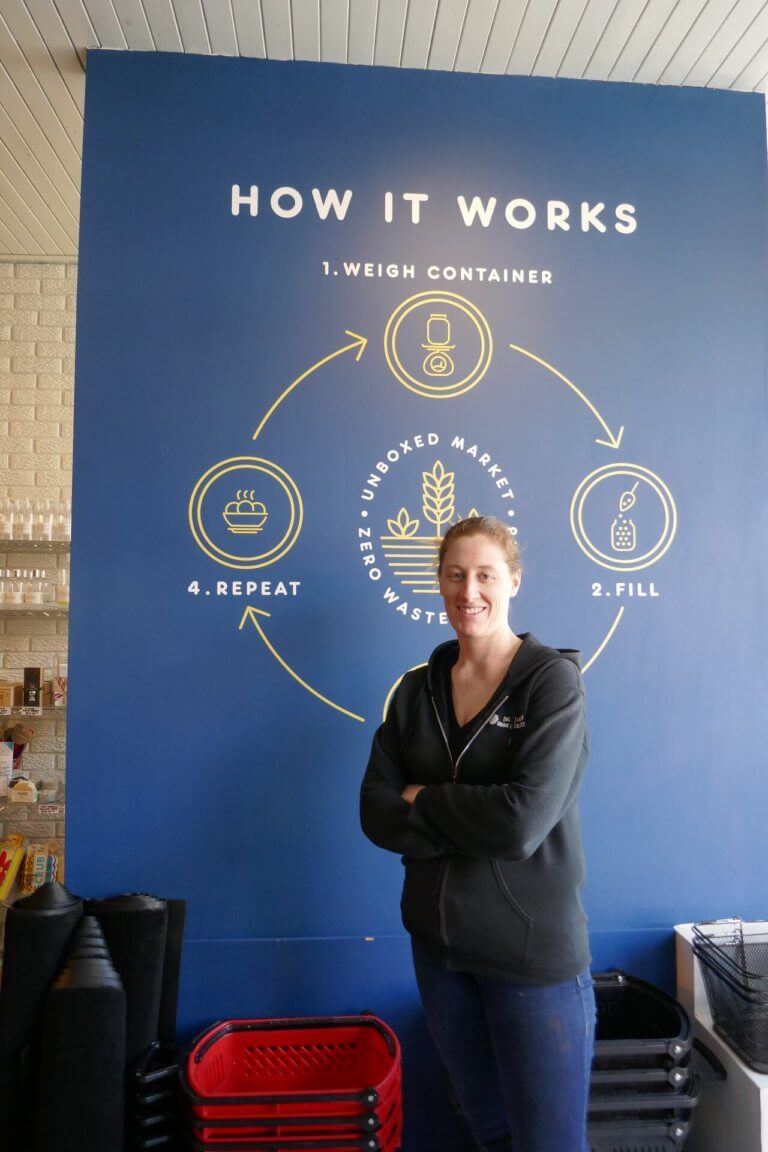
Image Source: CBC Radio
Communicate Value Clearly
If you offer a sustainable or circular product or service, you are offering additional value for the consumer. How much energy, water, and materials are we saving? How does this add up and what does it mean? What is the impact? When consumers can see tangible benefits to the planet as a result of their choice, it creates emotional value. In our consumer research, not being aware of sustainable benefits was a key barrier respondents found frustrating.
Whenever a consumer is browsing, either online or in-store, key visual elements can be used to explain benefits to the consumer. This could include package design, in-store merchandising, product descriptions, feature sections on a web page, or social media posts. Using clear, specific communications supported by simple graphics or third-party endorsements will help communicate the ethical value this product or service offers. Ensure this communication is consistent throughout the customer journey.
A few great examples to consider:
- Levi’s Waterless jeans feature a simple but bold tag sewn into the product, with a callout to the consumer on how to take steps to help the brand cut water usage.
- Chocosol leverages its package to communicate a powerful message about its product, stating it is not a bag of coffee at all, but rather a choice based on being part of something far bigger, touching on food justice, sustainability, ethical sourcing, and culturally sensitive trade.
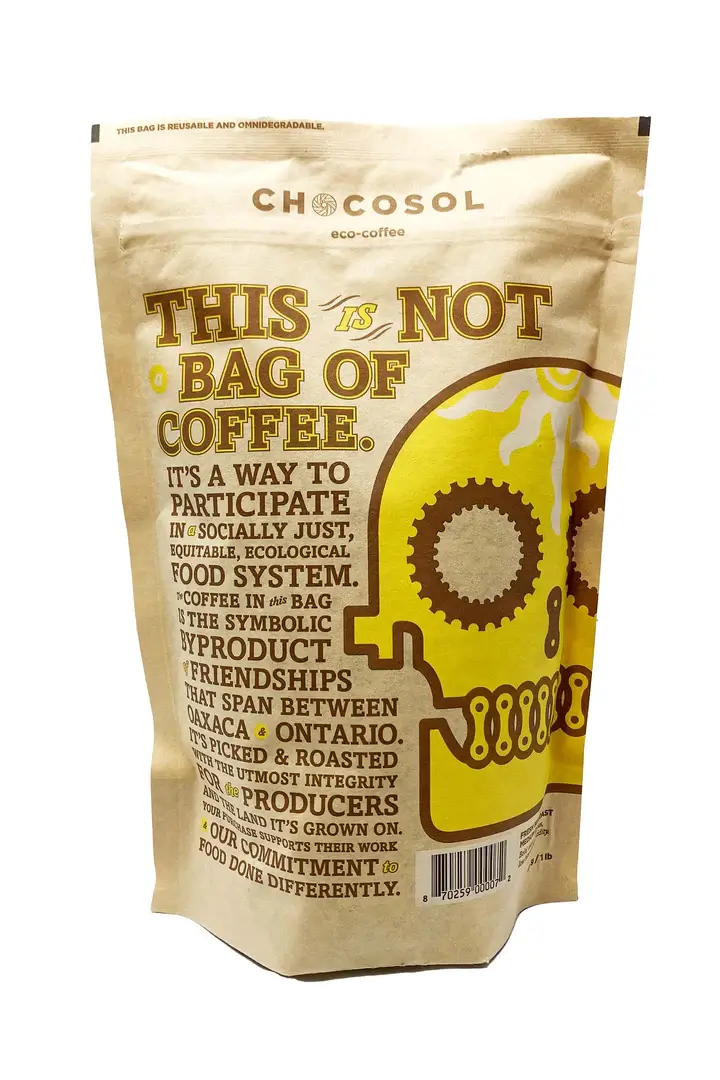
Image Source: Chocosol
Help Them Follow Through
If the offering includes a return or repair model or requires the consumer to complete the circular process in some other way, it needs to be easy for them to follow through. Clear instructions, supported by either graphic or video instructions, both online and in the store, ensure consumers have the information they need to be able to participate. In particular, ensuring any engagement within the retail space is connected to online communications is key: the research demonstrated that consumers could find useful information online, but often became confused at the frontline where store signage and service communication was not as clear or cohesive.
- Maxwell House leveraged its package to communicate how to dispose of its compostable pods to ensure the consumer follows through on their portion of the zero waste design.
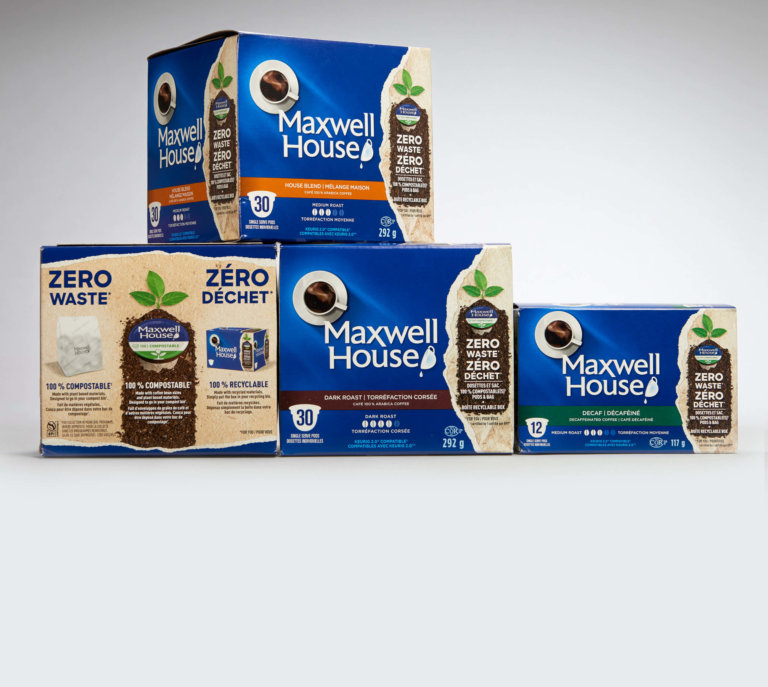
Image Source: SLD
- Nike uses online and in-store signage to encourage consumers to drop off old athletic shoes to be recycled into new materials that they donate to not-for-profit organizations. Fun graphics online and simple but strong in-store communication demonstrate how a cohesive approach across various channels makes the experiences easier for the consumer.
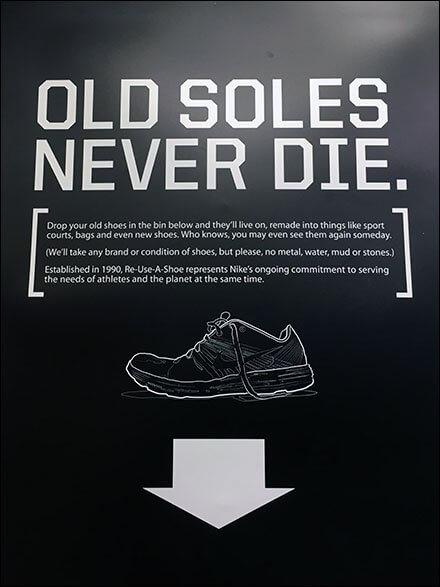
Image Source: Fixture Close Up
Connect It To The Brand
It should go without saying that you want to keep the visual approach of the brand when integrating communications about circular and sustainable services. However, we think it’s so important we want to emphasize this message. While you may want to introduce some new elements, such as icons or a new program name or even a new color, it must still feel connected to the brand from a visual perspective. Taking it too far in another direction can confuse the consumer or cause them to question the validity of the offering.
- Uniqlo’s Re Uniqlo store-within-a-store circular services and products leverage a green add-on to their logo, using the same font and minimalist visual approach, with white and light birch backdrops. On the product pages online, items are named “recycled” with lifestyle fashion photo visuals with supporting communication emphasizing how much of the materials are recycled.
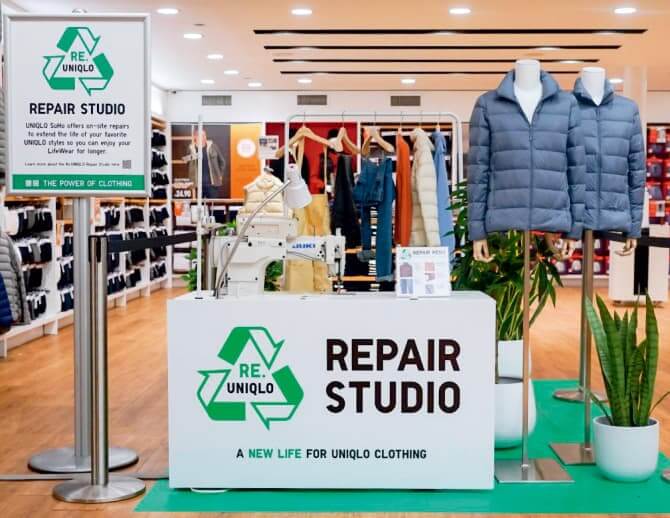
Image Source: Uniqlo
- Sainsburys’ fun visual campaign to promote the integration of more plant-based foods into traditional recipes such as hamburgers is very on-brand, with down-to-earth but playful quotes, their highly recognizable font and color, and a continuation of the graphic style they use for all their ads. While this is more of a marketing example than an in-store service promotion, Sainsbury’s uses similar visuals in stores where more sustainable options are available.
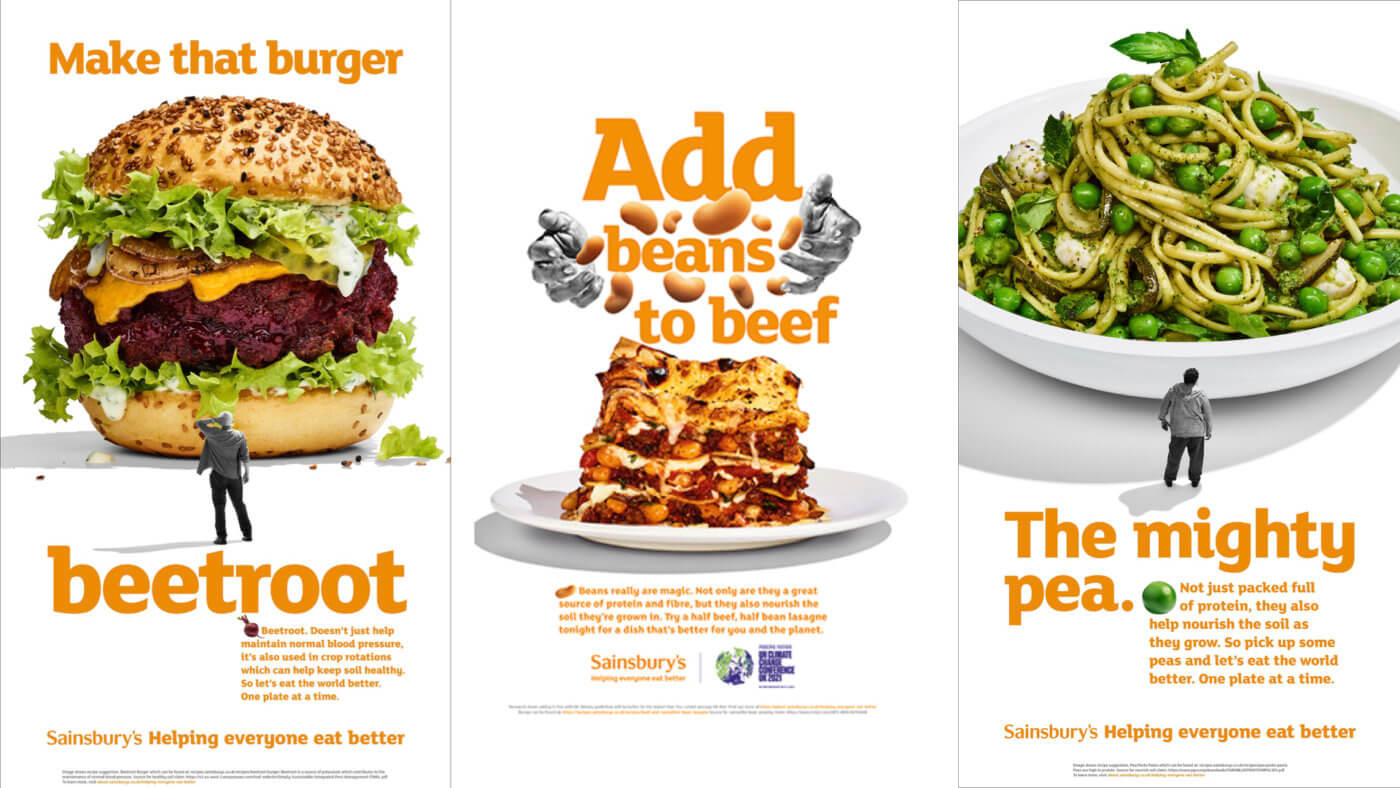
Image Source: Sainsbury’s
THE POWER OF KEEPING IT SIMPLE
Visual communications are most impactful when they are focused and simple. Overcomplicated visuals with extra bits and bobbles make it harder for consumers to absorb. The power of simplification cannot be overstated: it just makes things easier for people.
For more examples of how brands are introducing more sustainable offerings, check out our blog on how small changes can have a big impact.


